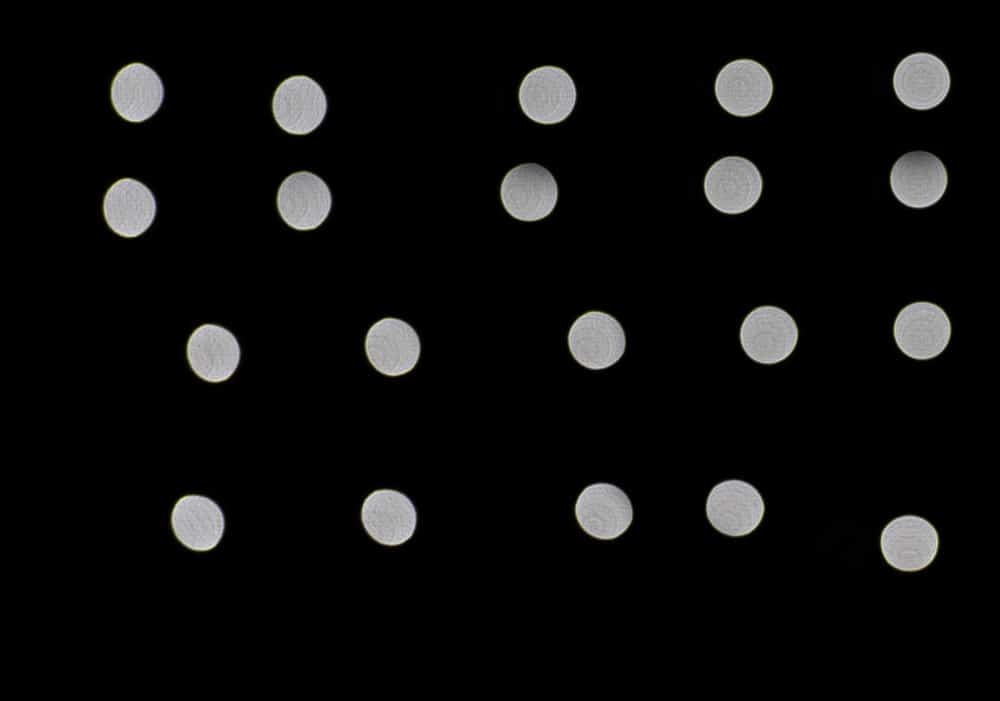There are two pieces to bokeh. The first is what things look like when they are well out of focus (OOF), and the second is how the transition from OOF to in-focus happens. The second is complicated, but the first is very simple. What you see when part of the image is well OOF is each point in the image times the OOF point spread function (PSF, in this case, aka bokeh balls). So you can understand what the bokeh in the OOF regions is gonna look like by looking at the OOF PSF across the frame. After you’ve looked at a few of these images that I’m going to show you here, you can see how the deep-OOF bokeh of just about any lens is going to look like with just about any scene.
The technique that I used to obtain the images below is explained here. I made an improvement for this set of images. I used an Astrozap artificial star for my light source instead of the LED flashlight. The artificial star is a much better approximation to an ideal point source, but it is rather dim. I moved the camera around and captured the PSFs in one quadrant, with the on-axis PSF in the upper right. I used a GFX 50S for the captures.
Here’s the set of point spread functions:
There is not much physical vignetting, which shows up as “cat’s eye” shapes off axis. There is a slight bright ring around the outside of the PSFs, which will cause the bokeh to be edgier than it would be if they were flat disks. The onion ring artifacts are minimal.
I call this reasonably good performance. Quite acceptable, considering that hardly anyone buys a wide, fairly slow lens for its bokeh.

Leave a Reply